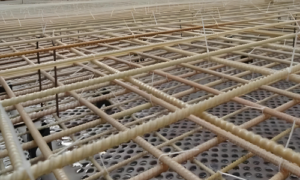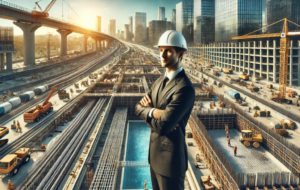When it comes to precast concrete structures, the materials you choose aren’t just components—they’re game-changers. And right now, Glass Fiber Reinforced Polymer (GFRP) rebars are making waves in the construction world. Imagine building something that doesn’t just stand the test of time but does so with less maintenance, reduced costs, and a smaller carbon footprint. Intrigued? Let’s dive into why GFRP rebars are the future of precast concrete.
Why GFRP Rebars? Let’s Talk Corrosion Resistance

Picture this: You’re building a wastewater treatment plant or a coastal structure. These environments are harsh, full of moisture, chemicals, and salt. Steel rebars, the traditional choice, might seem sturdy at first, but over time, they rust. And when steel rusts, it swells, cracks the concrete, and compromises the entire structure. Enter GFRP rebars—a material that doesn’t rust, no matter the environment. The result? Structures that last longer, with fewer headaches and lower maintenance costs. It’s not just about building; it’s about building better.
Light as a Feather, Strong as Steel
Have you ever tried to lift a bundle of steel rebars? It’s heavy, cumbersome, and requires serious muscle—or machinery—to move around. Now, imagine something that offers the same, if not better, tensile strength but is up to 80% lighter. That’s GFRP for you. In the world of precast concrete, where efficiency is king, this lightweight material translates to easier handling, quicker installation, and lower labor costs. And let’s be honest, who wouldn’t want a job that’s both easier and more efficient?
Strength that Doesn’t Compromise
Strength is non-negotiable in construction, and GFRP rebars deliver—big time. With twice the tensile strength of steel, these rebars ensure your structures can handle significant loads and stresses without compromising integrity. Whether it’s a high-rise building or a bridge, you need materials that stand up to the challenge. And with GFRP, you’re not just meeting those challenges—you’re exceeding them.
Less Concrete, More Savings
Did you know that traditional steel rebars require a thick layer of concrete just to keep them from corroding? That’s a lot of extra material, weight, and cost. But GFRP rebars? They don’t corrode, so they don’t need that extra concrete cover. This means lighter precast elements, easier transportation, and—most importantly—lower costs. It’s a simple change that makes a huge difference.
The Economic and Environmental Edge

In today’s world, where sustainability isn’t just a buzzword but a necessity, GFRP rebars shine. They’re not just about immediate benefits; they’re about long-term gains. Structures reinforced with GFRP last longer because they resist environmental degradation. This longevity reduces the need for repairs and replacements, saving you money in the long run.
And let’s not forget the environmental impact. Producing GFRP rebars generates fewer carbon emissions compared to steel. This aligns perfectly with global sustainability goals, and who knows? You might even snag some tax incentives or reduce compliance costs along the way.
Real-World Wins with GFRP
Still not convinced? Let’s look at some real-life examples:
- Marine Durability: In coastal areas, where saltwater is a constant enemy, GFRP-reinforced precast concrete structures have outperformed their steel-reinforced counterparts. The result? Lower maintenance costs and longer-lasting structures.
- Cost-Effective Transportation: The lightweight nature of GFRP rebars has led to significant savings in transportation and handling. For large infrastructure projects, this can mean the difference between staying on budget and blowing it.
- Extended Lifespan: Thanks to GFRP’s resistance to environmental degradation, structures last longer, which translates to lower lifecycle costs. It’s not just about building today; it’s about ensuring those buildings stand strong for decades.
The Future is Here—Are You Ready?

Adopting GFRP rebars in your precast concrete projects isn’t just a smart choice; it’s a strategic move toward more sustainable and cost-effective building practices. Yes, the initial investment might be higher, but the long-term savings in maintenance, extended lifespan, and overall cost make GFRP the material of the future. As the construction industry continues to evolve, those who embrace innovation like GFRP will lead the way. So, are you ready to revolutionize the way you build?
Your Next Step
If you’re excited about the potential of GFRP rebars and want to explore how they can benefit your next project, don’t hesitate to reach out. Let’s build something amazing together—something that lasts.
